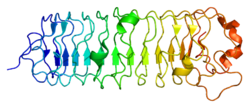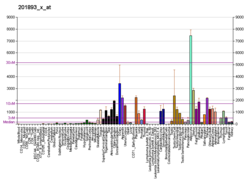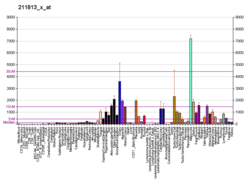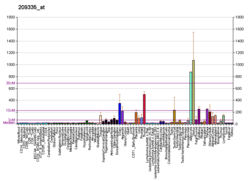La décorine est une protéine humaine codée par le gène DCN situé sur le chromosome 12 humain.
La décorine est un protéoglycane de poids moléculaire compris entre 90 et 140 kilodaltons (kD). Elle appartient à la famille des petits protéoglycanes riches en leucine (Small leucine-rich proteoglycan, SLRP); elle comprend un cœur protéique constitué de séquences de leucine répétées et d'une chaîne de glycosaminoglycane (GAG).
La décorine est un petit protéoglycane de la matrice cellulaire ou péricellulaire. Elle est un constituant des tissus conjonctifs, se liant aux fibrilles de collagène de type I.
Notes et références
- ↑ a b et c GRCh38: Ensembl release 89: ENSG00000011465 - Ensembl, May 2017
- ↑ a b et c GRCm38: Ensembl release 89: ENSMUSG00000019929 - Ensembl, May 2017
- ↑ « Publications PubMed pour l'Homme », sur National Center for Biotechnology Information, U.S. National Library of Medicine
- ↑ « Publications PubMed pour la Souris », sur National Center for Biotechnology Information, U.S. National Library of Medicine
|
|---|
| Superfamille TGF beta | | Ligand du ACVR ou TGFBR | | | Ligand de BMPR | | |
TGFBR
(ACVR, BMPR, Famille) | | TGFBR1: | - Récepteurs d'activine de type 1
- ACVRL1
- BMPR1
| | TGFBR2: | - Récepteurs d'activine de type 2
- AMHR2
- BMPR2
| | TGFBR3: | | |
| Transducteurs/SMAD | |
| Inhibiteurs de ligands | |
| Corécepteur | |
| Autres | |
 Portail de la biochimie
Portail de la biochimie

 Portail de la biochimie
Portail de la biochimie 


















